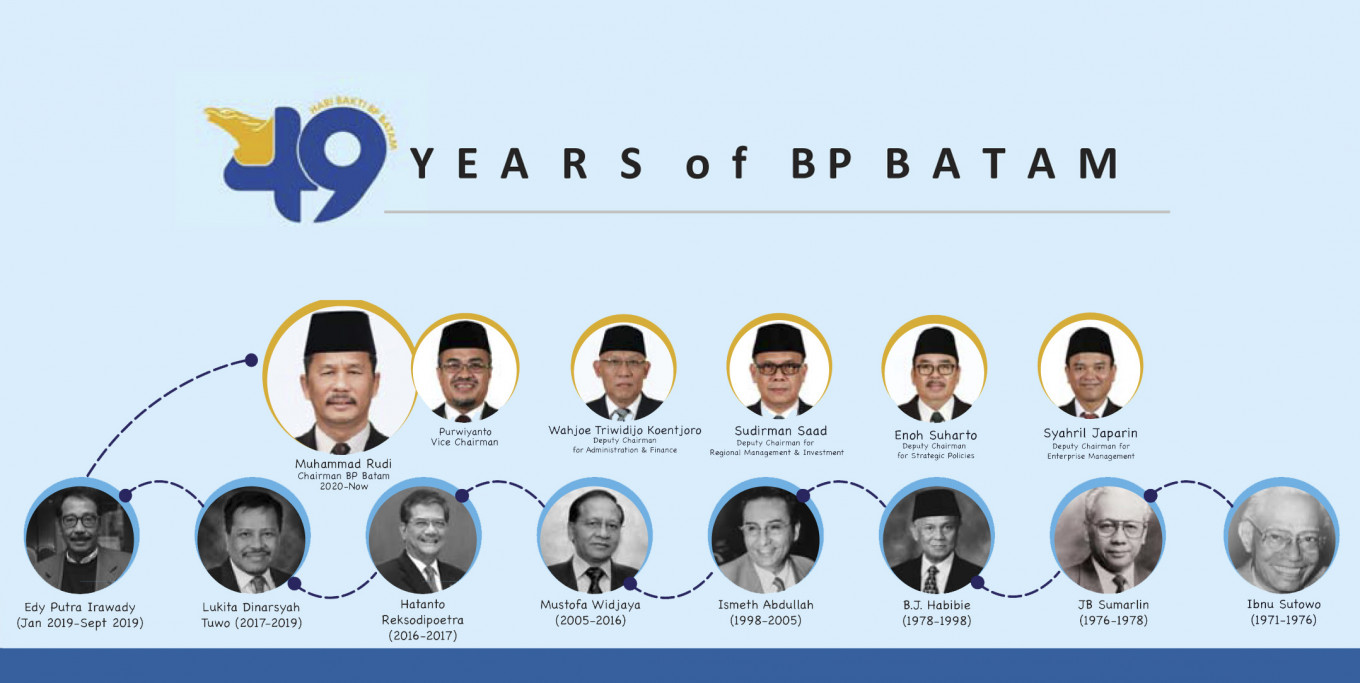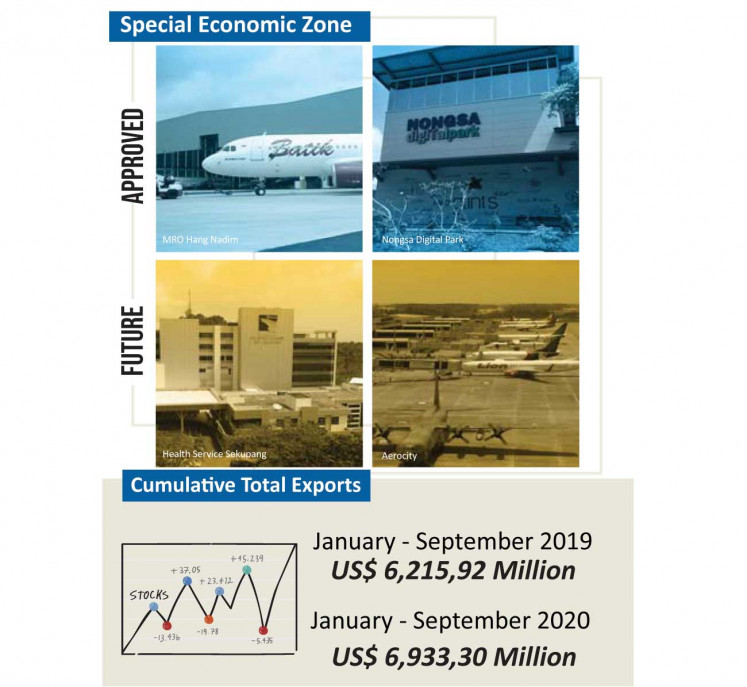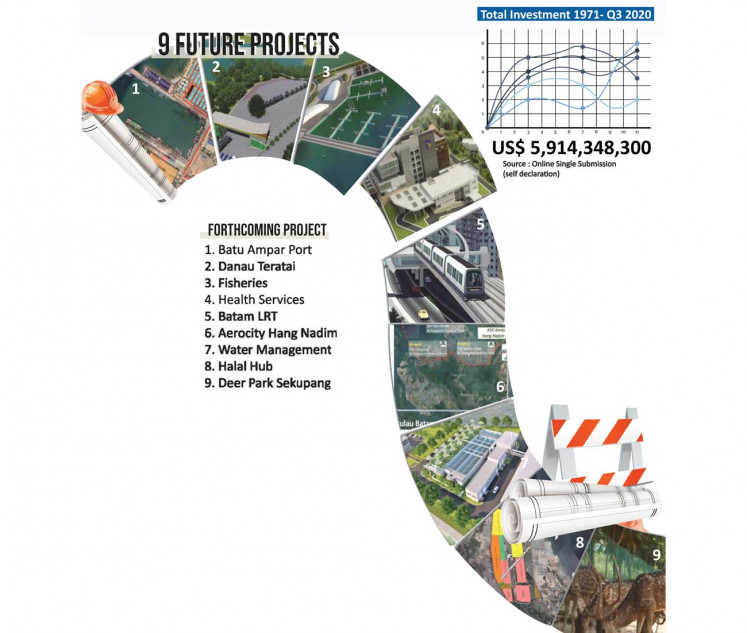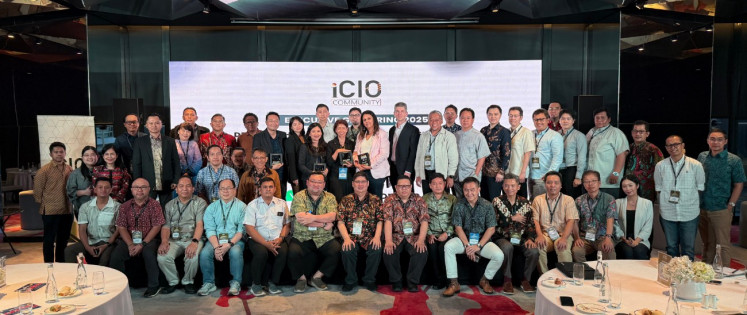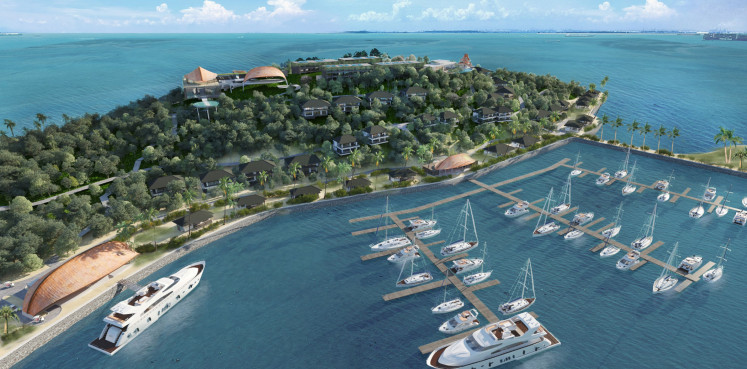Popular Reads
Top Results
Can't find what you're looking for?
View all search resultsPopular Reads
Top Results
Can't find what you're looking for?
View all search results49 years of BP Batam: Creating an investment hub in Asia Pacific
In the 1970s Batam began to be developed by Pertamina as a logistical and operational base for the oil and gas industry.
Change text size
Gift Premium Articles
to Anyone
I
n the 1970s Batam began to be developed by Pertamina as a logistical and operational base for the oil and gas industry. Based on Presidential Decree No. 41/1973, the development of Batam was later entrusted to a government agency -- the Batam Island Industrial Development Authority, now known as the Batam Development Authority (BP Batam).
As part of the vision and mission on Batam’s development, modern infrastructure and facilities of international standard were built in order to be able to compete with other economic development regions in the Asia Pacific.
Batam, Bintan and Karimun Free Trade Zone Batam (FTZ Batam) were later formed in reference to Law No. 36 on free trade zones and free ports. The legal references were revised several times before Law No. 44/2007 was in place.
. (Courtesy of BP Batam/.)In 2009, the House of Representatives and the central government discussed a legal draft that would oversee the formation of special economic zones (SEZs) for Batam and other regions in Indonesia.
Two special trade zones – Nongsa Digital Park and Batam Aero Technic (MRO) worth US$1.6 billion have been recently established by Coordinating Minister for Economic Affairs Airlangga Hartato.
The current development in the region all began 49 years ago with Batam seen as having huge economic potential given its strategic location.
With Batam only 415 square kilometers in size, the SEZ area in 1992 was expanded to Rempang and Galang, encompassing a total SEZ area of 715 sq.km.
Being 20 km to the south of Singapore, the island is strategically located on the international shipping route between the Malacca Strait and Singapore Strait.
. (Courtesy of BP Batam/.)More than 60,000 ships pass through the Malacca Strait every year. Batam is also strategically close to other ASEAN countries, which are home to 640 million people.
Currently, there are 24 industrial estates in the SEZ area that can be an option for investors wishing to develop their businesses.
Potential investors can go through the Online Single Submission investment application system. The Public Service Mall is also available to serve the needs of investors.
Batam is a unique industrial city. In accordance with Government Decree (PP) No. 62/2019, the head of BP Batam is currently former Batam mayor Muhammad Rudi, assisted by four deputies appointed directly by the coordinating minister for economic affairs.
This aim of the BP Batam top post appointment is to eliminate the dualism that has been one of the obstacles to accelerating investment in Batam.
With regard to COVID-19 mitigation, Batam has been successful in curbing the spread of the pandemic without resorting to lockdowns, thanks to the Batam COVID-19 task force. A Special Infection Hospital has been built on Galang Island to handle patients, including those from outside Batam.
With the pandemic under control, local authorities have been allowed to open international routes at two ports with destinations to Malaysia and Singapore.
Batam continues to show a good trend in attracting investors amid the pandemic, as evidenced by the entry of new investments with a total value of over $497 million. The absence of a lockdown has ensured business as usual.
Export and import activities have continued to fare normally with BP Batam having issued at least 30 export and import permits for companies operating in Batam, subject to compliance with Industry Ministry Circular No. 7/2020 on guidelines for submitting applications for licensing for the implementation of industrial activities in a public health emergency amid the COVID-19 outbreak.
After 49 years of development, BP Batam is still committed to making investment thrive. Several development plans have been drafted, including the planned construction of the Batam Light Rail Transit (LRT) and Hang Nadim SEZ Aerocity.
The two projects have drawn huge interest from investors as seen at the recent Indonesia Investment Day 2020 event organized by the Indonesian Embassy in Singapore, in collaboration with the National Coordinating Investment Agency and Bank Indonesia.
The Batam LRT will have two routes, from Batam Center to Tanjung Uncang and from Batu Ampar to Hang Nadim Airport. The $1.5 million investment project will see a 27.54 km route on the first line and 27.93 km on the second line.
Meanwhile, Hang Nadim SEZ Aerocity is expected to further enhance Hang Nadim International Airport, which currently has the longest runway in Indonesia with a length of more than 4 km and a width of 45 meters, enough to handle a Boeing-747 aircraft.
The planned Aerocity will cover an area of 1,763 hectares, with the airport, logistics, central business district (CBD) and the aviation industry being integrated under one business concept.
Various efforts and ideas will continue to roll from BP Batam, with full support from the central government, to make Batam an investment destination city not only in Indonesia but also in the Asia Pacific.
. (Courtesy of BP Batam/.)
